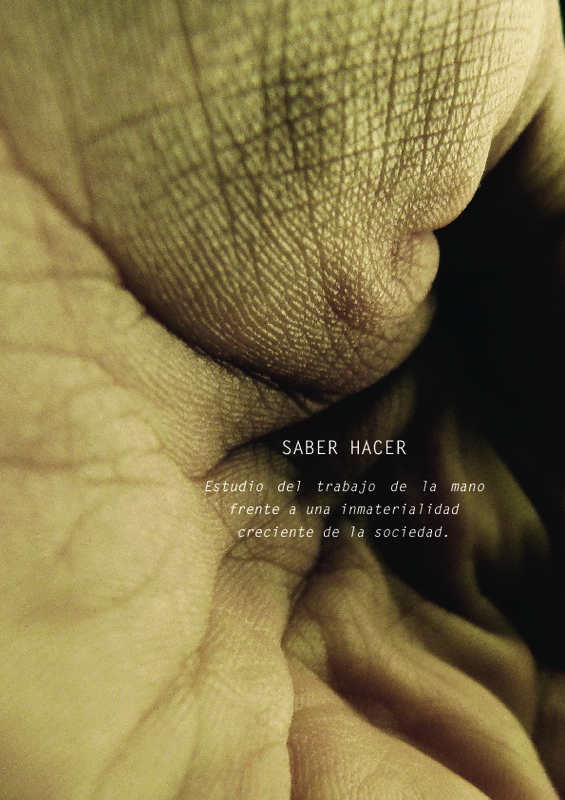|
Resumen:
|
[EN] Echoing my observations and feelings through my studies, I chose to
devote this work to the study of the work of the hand. Starting from a general
analysis of the evolution of the hand as a tool, we first study the ...[+]
[EN] Echoing my observations and feelings through my studies, I chose to
devote this work to the study of the work of the hand. Starting from a general
analysis of the evolution of the hand as a tool, we first study the hand mainly
based on the gestures and the objects. Then we focus on the origine between
theory and practice, and on the mechanisation induced by the industrialisation.
In a first chapter, the work of the hand and its disappearance through several
periods and fields are highlighted. This investigation enables us to understand
how and why the thought prevails on actions. Secondly, it is remarked that the
contemporary society is invaded by immateriality because of the virtuality of
technological objects, ideas and concepts. Therefore, we are able to demonstrate
how the influence of immateriality contributes in the disappearance of the role of
the hand in the society. Thirdly, a series of plastic art works has been developed
in relation with the work of the hand. Each part of these works deals with an aspect
of this topic and use a different technic. The manual work has been stressed
each time the technic enabled it. The theoretical and practical investigations
were developed progressively together since both must cooperate. Following the
guiding intuition of Richard Sennett «Making is thinking», through its construction
and development this manuscript defends the same reflexion.
[-]
[ES] Haciendo eco a las experiencias y observaciones vividas durante
mis estudios, he elegido dedicar ese trabajo al estudio del trabajo de la
mano. Partiendo de un análisis general de la evolución de la mano ...[+]
[ES] Haciendo eco a las experiencias y observaciones vividas durante
mis estudios, he elegido dedicar ese trabajo al estudio del trabajo de la
mano. Partiendo de un análisis general de la evolución de la mano como
herramienta,veremos en primer lugar la mano en el ámbito de la cotidianidad
basándonos en los gestos y los objetos. Después seguiremos con el origen de
la división entre el saber y el hacer y la mecanización puesta en marcha por
la industrialización. En el primer capítulo, hemos buscado poner en evidencia
el trabajo de la mano y su pérdida a través de varios ámbitos y épocas. Esa
parte nos ha permitido entender cómo y por qué el pensamiento prevalece
sobre la acción. Para profundizar más en el tema, hemos estudiado la sociedad
contemporánea invadida por la inmaterialidad, por medio de la virtualidad, de
los objetos tecnológicos, las ideas y los conceptos. Así hemos podido demostrar
cómo la influencia dominante de la inmaterialidad ha participado en gran parte
en la desaparición del papel de la mano en la sociedad. En último lugar, hemos
analizado varias series de obras plásticas realizadas durante el Máster en
relación con el trabajo de la mano. Cada obra habla de una parte del tema y
utiliza una técnica diferente, no obstante cada pieza intenta poner en evidencia
el trabajo manual cada vez que la técnica lo permite. Hemos seguido el mismo
desarrollo tanto en la investigación teórica como en la investigación práctica,
porque los dos se han trabajado al mismo tiempo. Como expresa la máxima que
Richard Sennett defiende, «Hacer, es pensar»: a través de su construcción y su
desarrollo esta memoria defiende el mismo tipo de reflexión.
[-]
|







